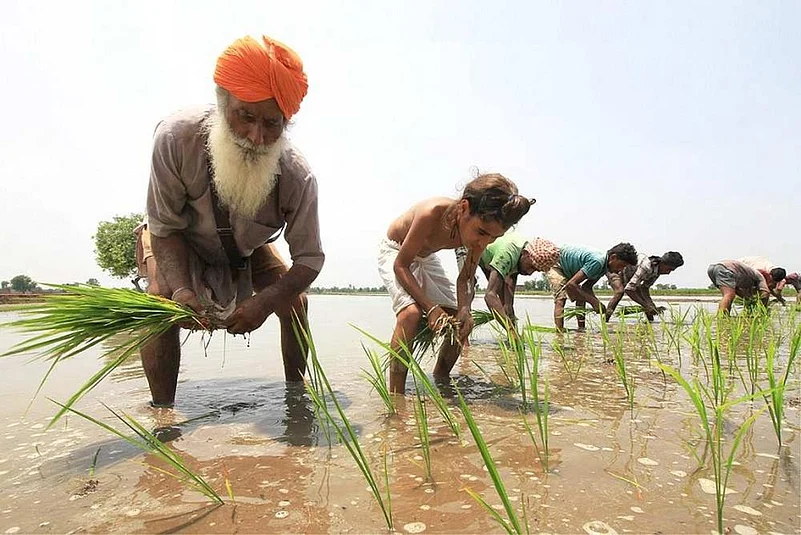Agriculture Minister Narendra Singh Tomar on Friday said 10 states and five union territories are currently not implementing the Pradhan Mantri Fasal Bima Yojana (PMFBY). The ten states are: Arunachal Pradesh, Bihar, Gujarat, Jharkhand, Meghalaya, Mizoram, Nagaland, Punjab, Telangana and West Bengal, the minister said in a written reply to the Rajya Sabha. Chandigarh, Dadra & Nagar Haveli and Daman & Diu, Delhi, Ladakh and Lakshadweep are the UTs which are not implementing the PMFBY at present, he added.
Tomar also mentioned that the annual audit of the Pradhan Mantri Fasal Bima Yojana (PMFBY) has been conducted by the Comptroller and Auditor General of India (CAG). Launched in 2016, the PMFBY provides comprehensive risk insurance against crop damage due to non-preventable natural risks from pre-sowing to post-harvest for the crops/areas notified by the concerned state government.The scheme is demand driven.
Advertisement
Since inception of the scheme in 2016-17 till 2021-22, the minister said against the premium of Rs 25,174 crore paid by farmers, claims of Rs 1,30,185 crore have been paid in about 12.38 crore farmer applications. The scheme is regularly reviewed in consultation with stakeholders especially to address the challenges faced in its operational implementation, he said replying to another query. Accordingly, the operational guidelines of the scheme were revised and revamped with effect from Rabi 2018 season and Kharif 2020 season respectively.
Some of the major improvements made include making the scheme voluntary for all farmers, compulsory use of at least 0.5 per cent of the gross premium collected by insurance companies for Information, Education and Communication (IEC) activities and intensive use of technology.
Advertisement
Other key improvements include change in financial sharing pattern from 50:50 between central and state government to 90:10; long term i.e. 3 year contract to insurance companies; freedom to states to choose risk cover as per requirements; use of technology, etc. Tomar also said that the scheme is mainly implemented on an 'Area Approach' basis.
The admissible claims are worked out and paid directly to the insured farmer's account by insurance companies based on the yield data, per unit area, furnished to the insurance company by the concerned state government and claim calculation formula envisaged in the Operational Guidelines of the scheme on receipt of State government's requisite share in premium subsidy, he said.
However, losses due to localized risks of hailstorm, landslide, inundation, cloud burst and natural fire and post-harvest losses due to cyclone, cyclonic/unseasonal rains & hailstorms are calculated on an individual insured farm basis. These claims are assessed by a joint committee comprising representatives of the state government and the concerned insurance company.
Overall coverage of small and marginal farmers under the scheme is about 85 per cent, which approximately corresponds to their ratio in the farmer population, he added.















 Just one email a week
Just one email a week